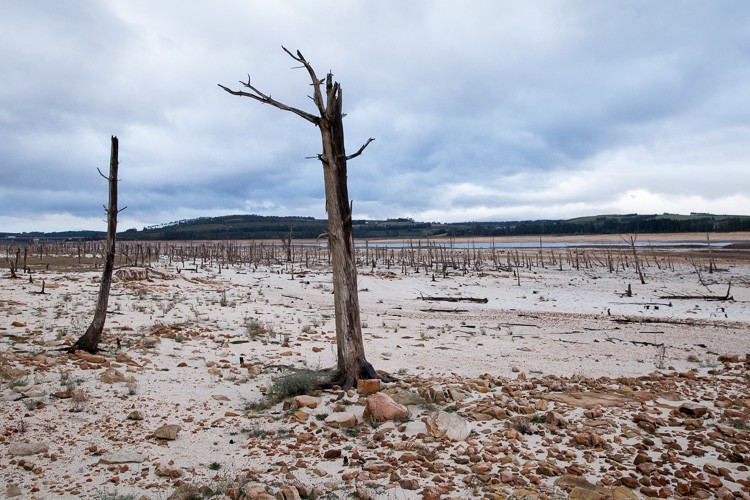In photos: Cape Town’s water crisis
Perilous state of city’s water supply is starkly visible
There are six major dams in Cape Town; Berg River, Steenbras Lower, Steenbras Upper, Theewaterskloof, Voëvlei, and Wemmershoek. These hold 99.6% of the city’s water capacity, with eight smaller dams, mostly on Table Mountain, responsible for a mere 0.4%. Theewaterskloof is the largest of the six major dams, with a total capacity of 480,188 megalitres. It is responsible for storing more than half of Cape Town’s surface water supply.
As of Monday 15 May, the level of Theewaterskloof was just 15.7%, compared to close to 31.3% at the same time last year, 51.3% in 2015, and 74.5% in 2014. Across the six dams the levels were a mere 21.2%, a record low.
Last year June, GroundUp reporters visited some of the dams and photographed them. We returned last week (11 May). Caution: these photos are not taken at the same time of the year, so they are not directly comparable for understanding the drop in the dam levels. GroundUp is intending to eventually have a set of directly comparable photos.
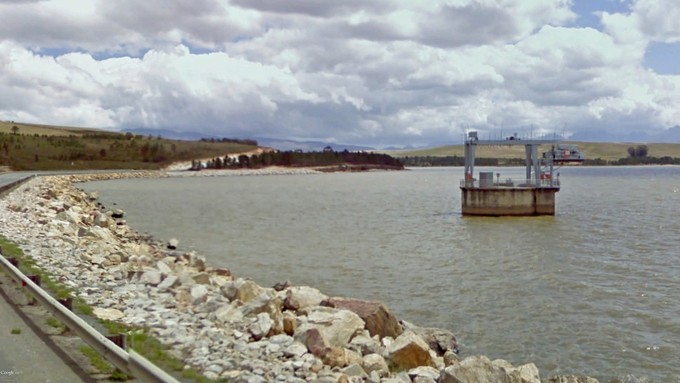
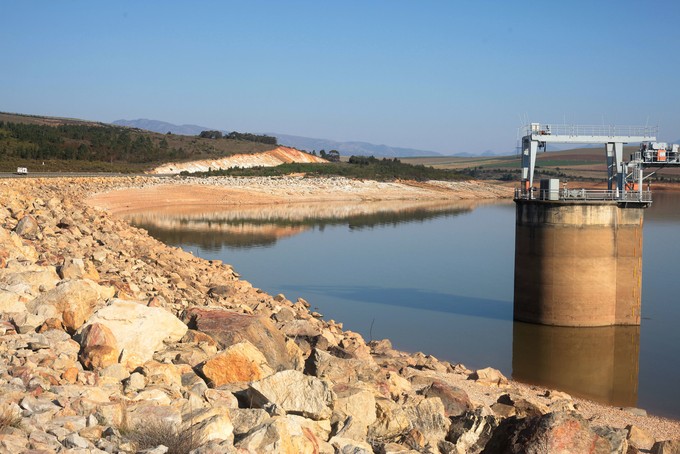
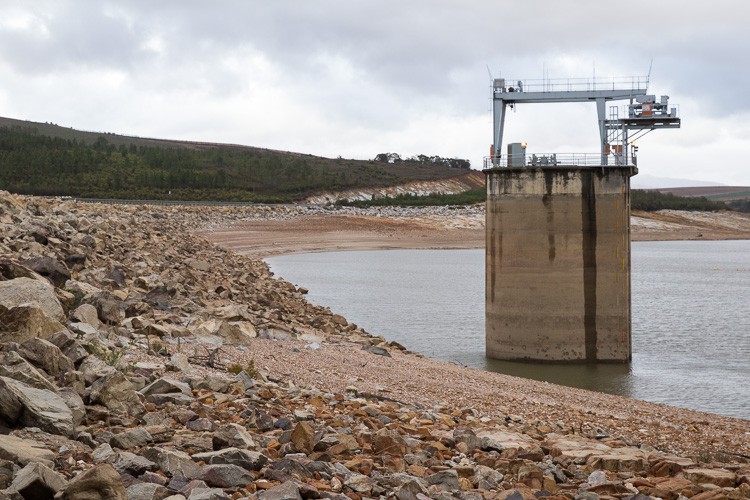
If you zoom in on the photos above, you can see yellow vertical markers on the right side of the concrete column. There are four more visible in May 2017 than in June 2016.
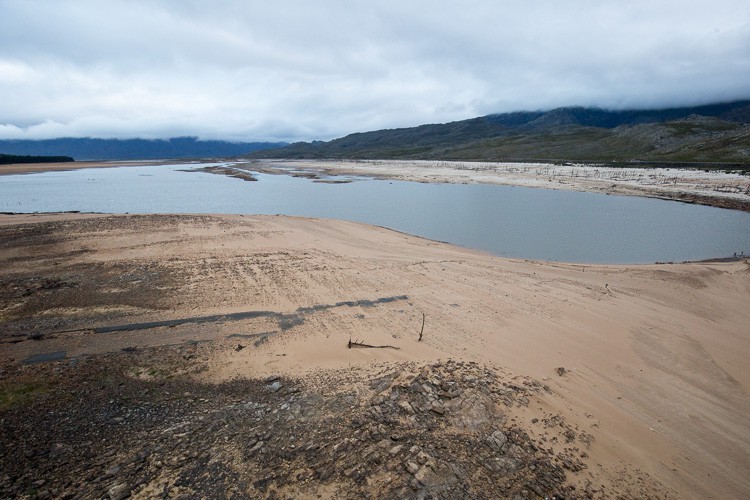
The Berg River Dam is the third largest dam supplying the city, behind Theewaterskloof and Voëlvlei. The dam was at 33% of capacity last week, higher than the 27% this time last year, but much lower than the 54% level in 2015, and 90.5% in 2014.
Though the dam wall currently stores more than 42,000 megalitres of water, parts of the reservoir are dry. In areas of the dam higher up, GroundUp reporters were able to walk across the reservoir from one bank to another. There is no sign of plant or animal life at the dam and the earth was cracked in places due to arid conditions.
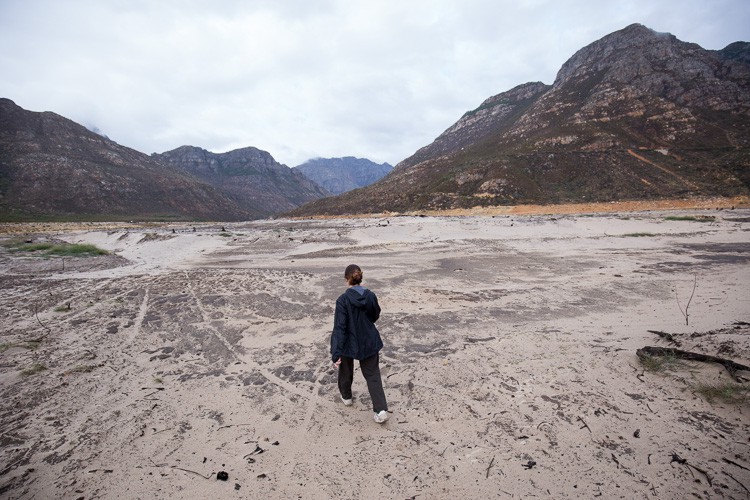
Support independent journalism
Donate using Payfast

Don't miss out on the latest news
We respect your privacy, and promise we won't spam you.
Next: Protesters demand secret ballot for Zuma
Previous: It’s our turn to benefit, say residents of Gugulethu informal settlement
© 2017 GroundUp. 
This article is licensed under a Creative Commons Attribution-NoDerivatives 4.0 International License.
You may republish this article, so long as you credit the authors and GroundUp, and do not change the text. Please include a link back to the original article.

